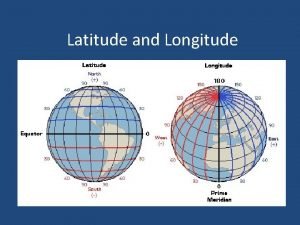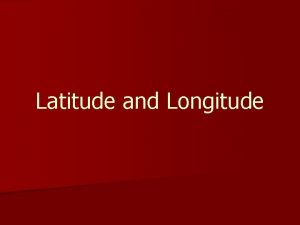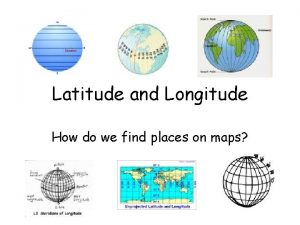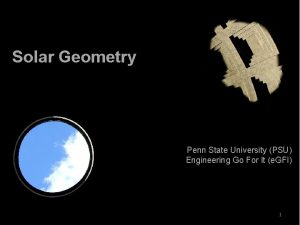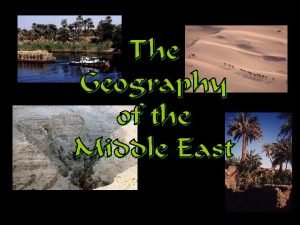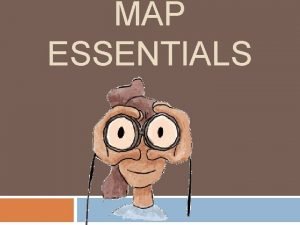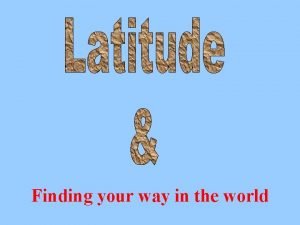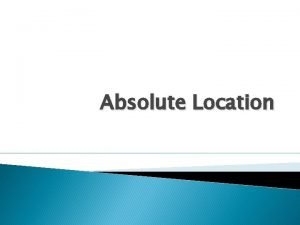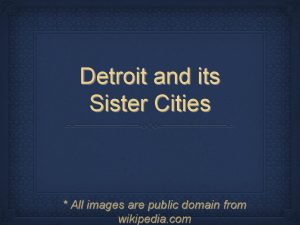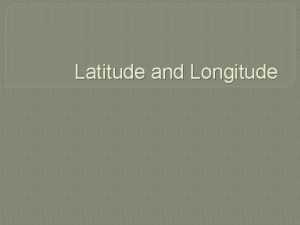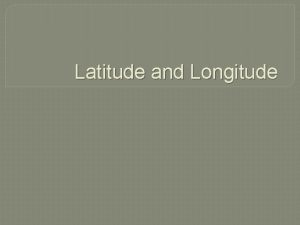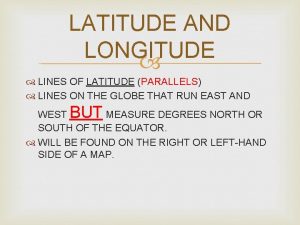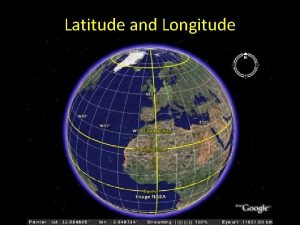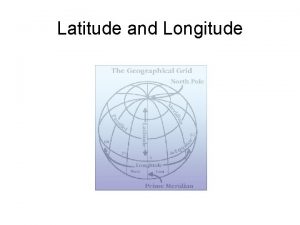Longitude Latitude Latitude these lines run the same










- Slides: 10

Longitude & Latitude

Latitude – these lines run the same direction as the equator. The equator divides the world into the Northern & Southern hemispheres. (lat is flat) Northern Hemisphere Southern Hemisphere

Longitude – These lines run from pole to pole. The Prime Meridian divides the world into the Western and Eastern hemispheres. (orange slices) Western Hemisphere Eastern Hemisphere

Finding Latitude & Longitude Latitude 30°N, 120°W 0°, 30°E Hemispheres Northern & Western Eastern Latitude Hemispheres 60°S, 45°W Southern & Western 15°N, 135°E Northern & Eastern

Seatwork • Answer Questions #22& 23 on p. 16 of your textbook. 22 – A (30°S, 120°W) B (0°, 30°W) C (30°N, 90°W) D (60°N, 90°E) E (45°S, 75°E) 23 – A Northern & Western B Southern & Eastern C Northern, Western & Eastern

Thematic Maps – these maps use colours to show us the location of a specific feature. Feature: is what the map is showing us Legend: tells us how to read the information What do you do? Match the colour to the legend.

Sample #1 Feature: Permafrost and Ground Ice Conditions Legend: Colours show the permafrost zones

Sample #2 Feature: Relief – height of the surface of the land Legend: Colours show the height of the land Points B A A B 300 – 400 m 2000 – 3000 m

Seatwork • Answer questions #1 – 4 on p. 17 of your textbook

Answers 1 a) Gulf of Mexico b) Arctic Ocean c) Hudson Bay 2 a) (49°N, 128°W) b) (47°N, 53°W) c) (63°N, 66°W) 3 a) Deeper than 6000 m b) 500 – 1000 m c) 1000 – 2000 m 4 a) Tends to get deeper the further you get from shore. b) The eastern side is lower than the western side. c) They all have many bays and islands. The shoreline isn’t straight.
 Horizontal imaginary line
Horizontal imaginary line World map with longitude and latitude
World map with longitude and latitude When the lines of latitude and longitude combine it makes
When the lines of latitude and longitude combine it makes What is latitude
What is latitude Middle east latitude
Middle east latitude Lines of latitude run blank and blank
Lines of latitude run blank and blank Earth latitude map
Earth latitude map Lines that run north and south
Lines that run north and south Latitude fatitude
Latitude fatitude Lines of latitude run from
Lines of latitude run from What directions do latitude lines run
What directions do latitude lines run
